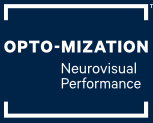In this day and age we are all looking for a quick fix, or hope to be able to offer one.
I’m reminded of a wise friend telling me of what his mentor said. “I can teach your child to beat a test in a few weeks, but to gain the lifelong value of actually learning the material, so that this learning has a positive effect on the rest of their life, it will take us many months.”
This concept was just proven by the Pediatric Eye Disease Investigator Group, showing that 12 weeks of computer based vision therapy to treat Convergence Insufficiency is not successful (http://journals.lww.com/optvissci/pages/articleviewer.aspx?year=9000&issue=00000&article=98455&type=abstract).
Like most things in life, tangible outcomes and real change take not just time and energy, but time and energy that is properly directed.
Here is the summary:
Purpose: To compare the effectiveness of home-based (HB) computer vergence/accommodative therapy (HB-C) to HB near target push-up therapy (HB-PU) and to HB placebo treatment (HB-P) among children aged 9 to <18 years with symptomatic convergence insufficiency (CI).
Methods: In this multicenter randomized clinical trial, participants were randomly assigned to computer therapy, near target push-ups, or placebo. All therapy was prescribed for 5 days per week at home. A successful outcome at 12 weeks was based on meeting predetermined composite criteria for the CI Symptom Survey, near point of convergence, and positive fusional vergence at near.
Results: A total of 204 participants were randomly assigned to HB-C (n = 75), HB-PU (n = 85), or HB-P (n = 44). At 12 weeks, 16 of 69 (23%, 95% CI: 14-35%) in the HB-C group, 15 of 69 (22%, 95% CI: 13-33%) in the HB-PU group, and 5 of 31 (16%, 95% CI: 5-34%) in the HB-P group were classified as having a successful outcome. The difference in the percentage of participants with a successful outcome in the HB-C group compared with the HB-PU group was -4% (two-sided 97.5% CI: -19 to +11%; p = 0.56) and with the HB-P group was +5% (two-sided 97.5% CI: -12 to +22%; p = 0.52), adjusted for baseline levels of the composite outcome components.
Conclusions: The majority of participants with symptomatic CI did not have a successful outcome at 12 weeks. Some participants treated with placebo were successful. With recruitment reaching only 34% of that originally planned and differential loss to follow-up among groups, estimates of success are not precise and comparisons across groups are difficult to interpret.
